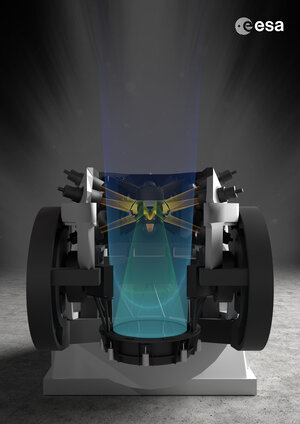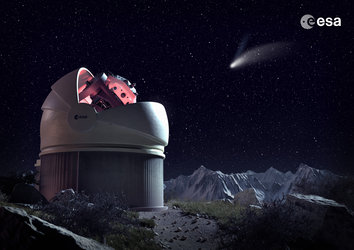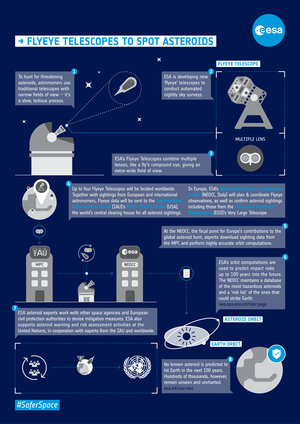

One step closer to the Flyeye network
ESA’s plan to deploy a network of asteroid-detecting ‘Flyeye’ telescopes is one step closer to reality. Last week, the Agency signed an agreement with the Italian Space Agency (ASI) to locate the first ‘Flyeye’ telescope atop the 1865-metre Monte Mufara mountain on the island of Sicily.
The novel Flyeye design mimics that of a fly’s compound eye – a single mirror splits incoming light into separate channels imaged by 16 different cameras to expand the telescope’s field of view.
The Flyeye-1 telescope, housed within a dedicated observatory building atop Monte Mufara, will be the first in a network of up to four telescopes spread across the globe, that together will have the ability to run nightly surveys of the entire sky, automatically scanning for new near-Earth objects (NEOs) – potentially hazardous space rocks that could impact our planet.
The development of the first-generation ‘Flyeye-1’ telescope began in 2016, when ESA signed a contract with a European consortium led by OHB Italy.
The site and access road required for the construction of the observatory was made available by ASI. Construction began in June 2024 and is expected to be completed by the end of 2025, in time for the telescope’s arrival.
Click here for more information on ESA’s activities dedicated to planetary defence.





